Welcome to our comprehensive guide on finding the best monitor for video editing – your gateway to a more immersive and precise editing experience. In the fast-evolving landscape of video editing, having the right monitor is key to unleashing your creativity and bringing your vision to life.
In this guide, we’ll navigate through essential features, size considerations, connectivity options, and real user experiences to help you make an informed decision. Whether you’re a seasoned editor or just stepping into the world of video creation, we’ve got you covered.
Click on the links below to dive into specific categories and discover the monitors that can elevate your editing workflow. Let’s embark on this journey together and transform the way you edit videos!
Interested in our Other reviews, comparisons and tutorials? CLICK HERE
Table of Contents
Best Monitor for Video Editing
Pros and Cons
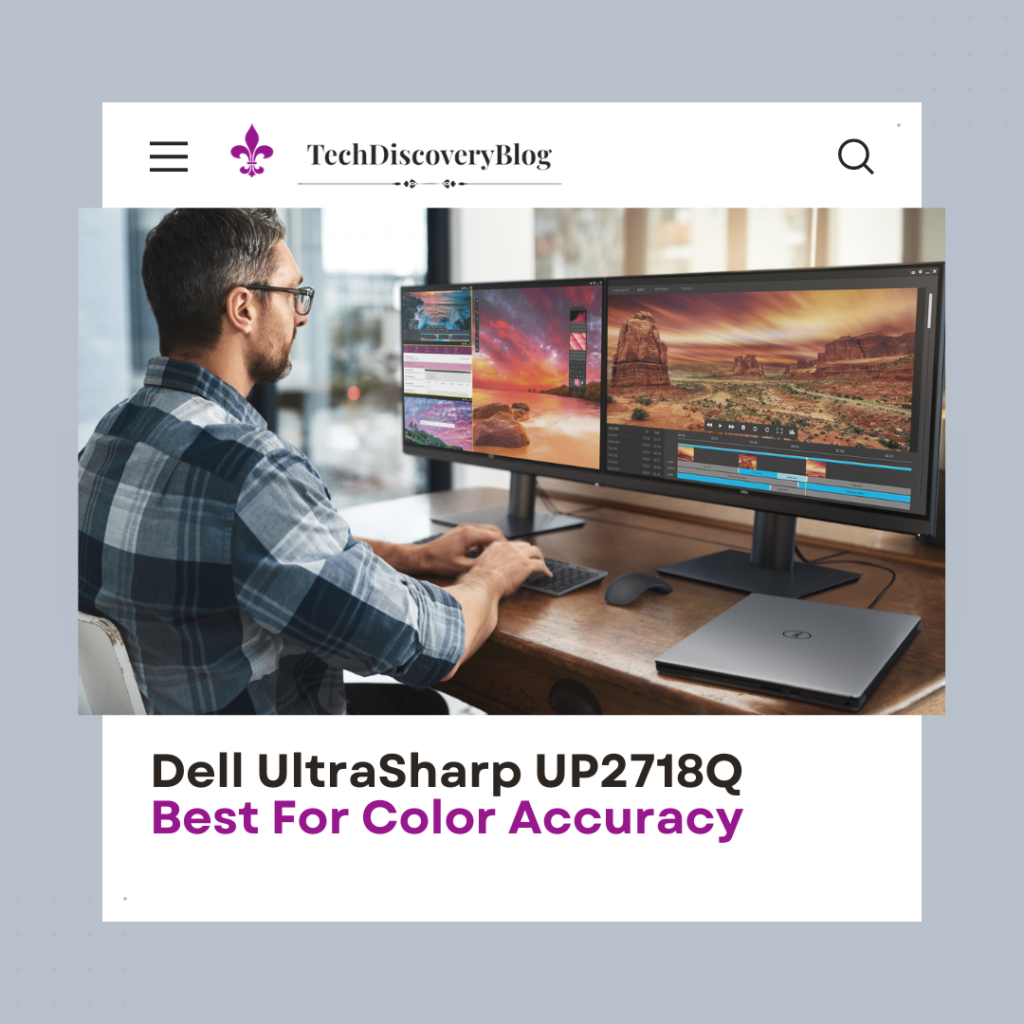
Dell UltraSharp U2718Q
Dell’s UltraSharp U2718Q is a 27-inch 4K monitor designed for professional video editing, offering stunning color accuracy and a variety of connectivity options.
Pros Cons
✅ 4K resolution for crystal-clear visuals. ❌ Higher price point
✅ Excellent color accuracy with HDR support ❌ May not be suitable for gaming due to response time.
✅ Wide viewing angles with an IPS panel ❌ Some users report backlight bleeding issues
✅ Versatile connectivity options, including HDMI and DisplayPort
✅ Sleek design with adjustable stand for ergonomic comfort.
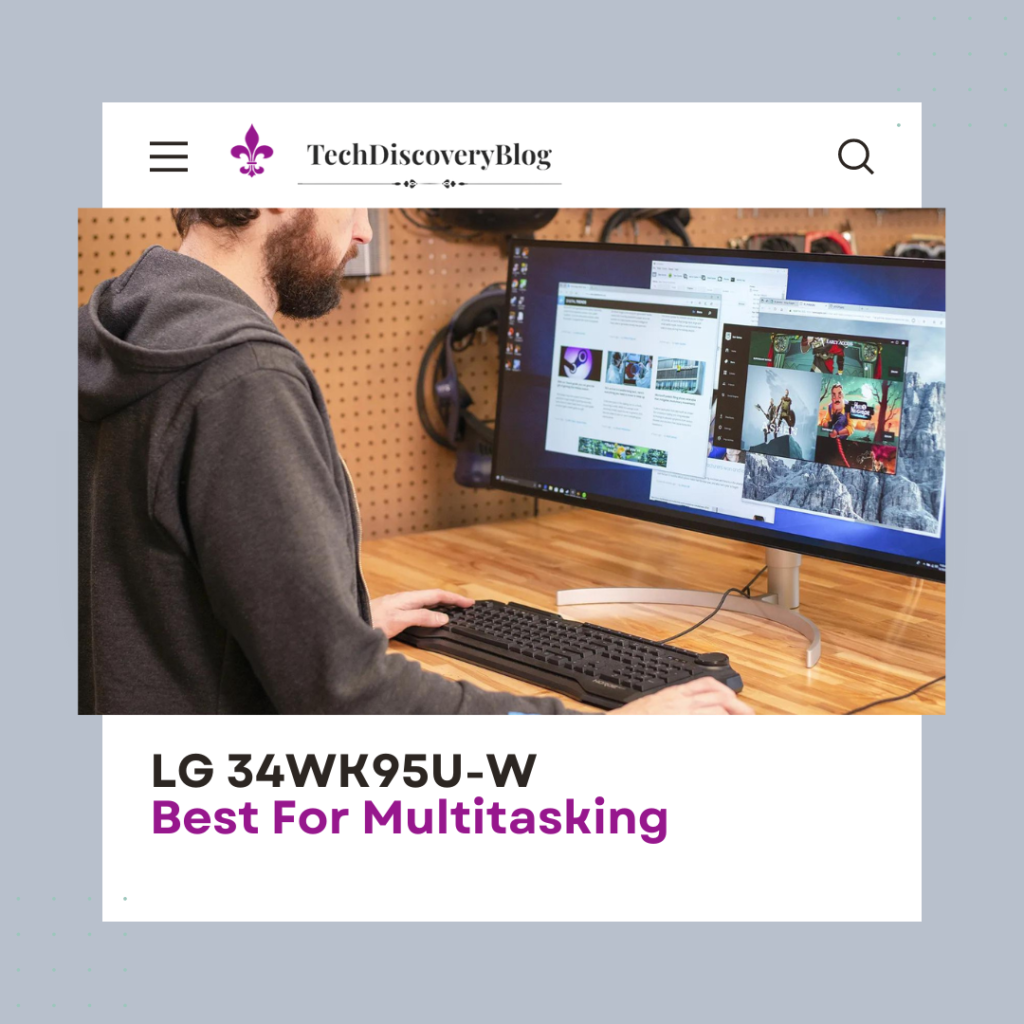
LG 34WK95U-W
LG’s 34WK95U-W is a 34-inch ultrawide monitor with a 5K resolution, providing a spacious workspace for multitasking and detailed video editing.
Pros Cons
✅ Ultrawide format enhances productivity ❌ Limited height adjustment.
✅ 5K resolution for detailed editing work ❌ Some users report backlight bleeding
✅ HDR support for vibrant colors ❌ Higher price for the ultrawide 5K experience.
✅ USB-C connectivity for streamlined cable management
✅ On-screen control for easy customization
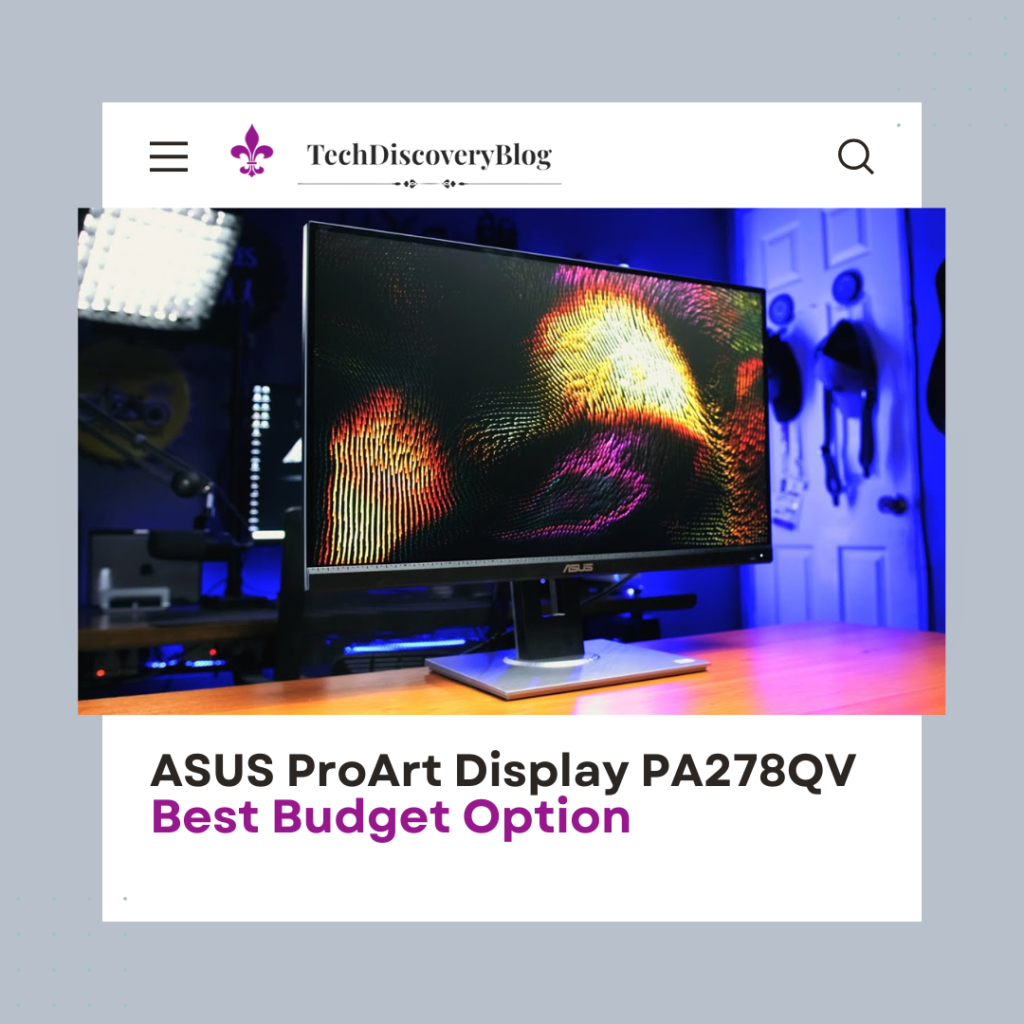
ASUS ProArt Display PA278QV
The ASUS ProArt Display PA278QV is a 27-inch monitor with a focus on color accuracy, featuring a factory-calibrated IPS panel suitable for budget-conscious video editors.
Pros Cons
✅ Budget-friendly option for color-accurate editing ❌ Limited to 1440p resolution
✅ Wide color gamut coverage ❌ Not ideal for high-end gaming
✅ Calibrated for color accuracy out of the box ❌ Bezels are slightly thicker compared to other models
✅ Adjustable stand for ergonomic comfort
✅ Multiple connectivity options
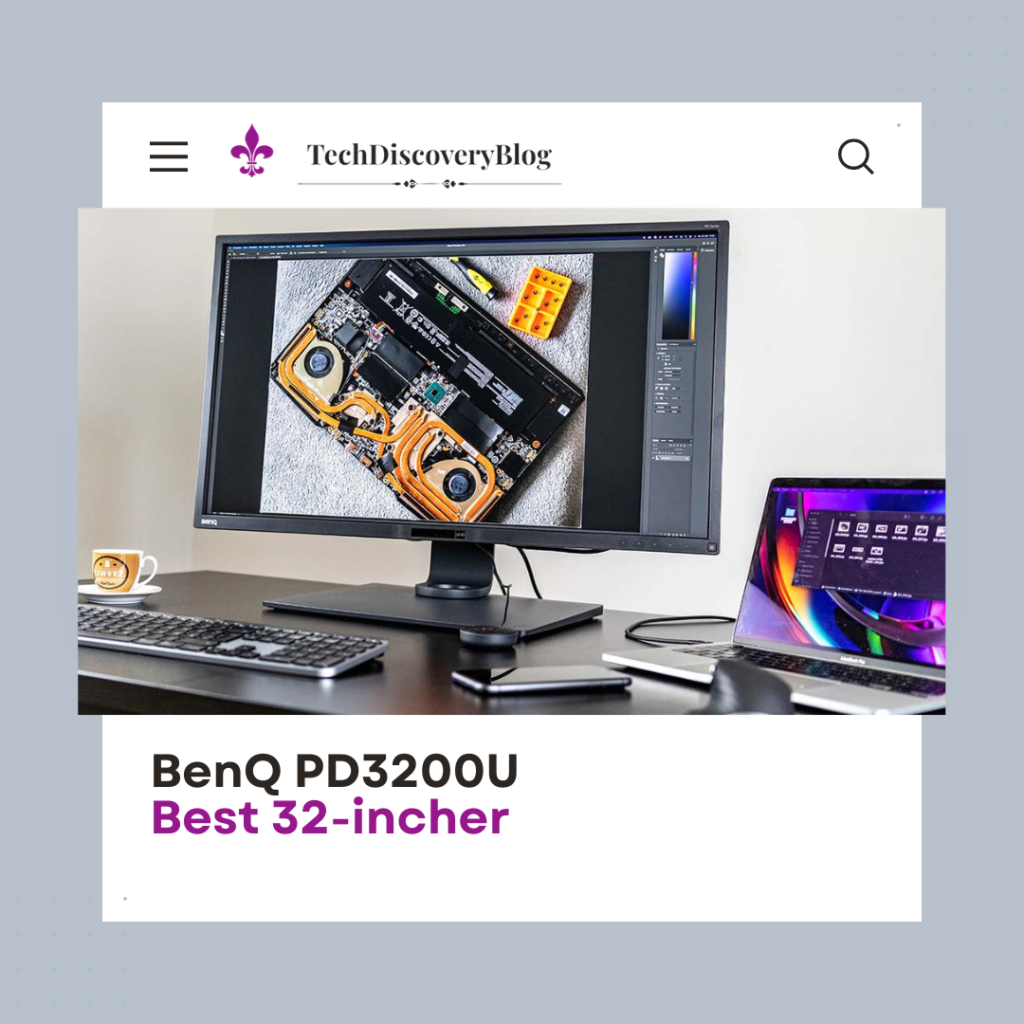
BenQ PD3200U
The BenQ PD3200U is a 32-inch 4K monitor designed for content creators with features like DualView, enabling efficient multitasking during video editing.
Pros Cons
✅ Ample screen real estate at 32 inches ❌ Limited HDR support
✅ 4K resolution for detailed editing work. ❌ Response time may not be ideal for gaming
✅ DualView function for enhanced multitasking ❌ Color accuracy might require calibration for critical work.
✅ Adjustable stand with pivot, swivel, and height options
✅ Excellent build quality
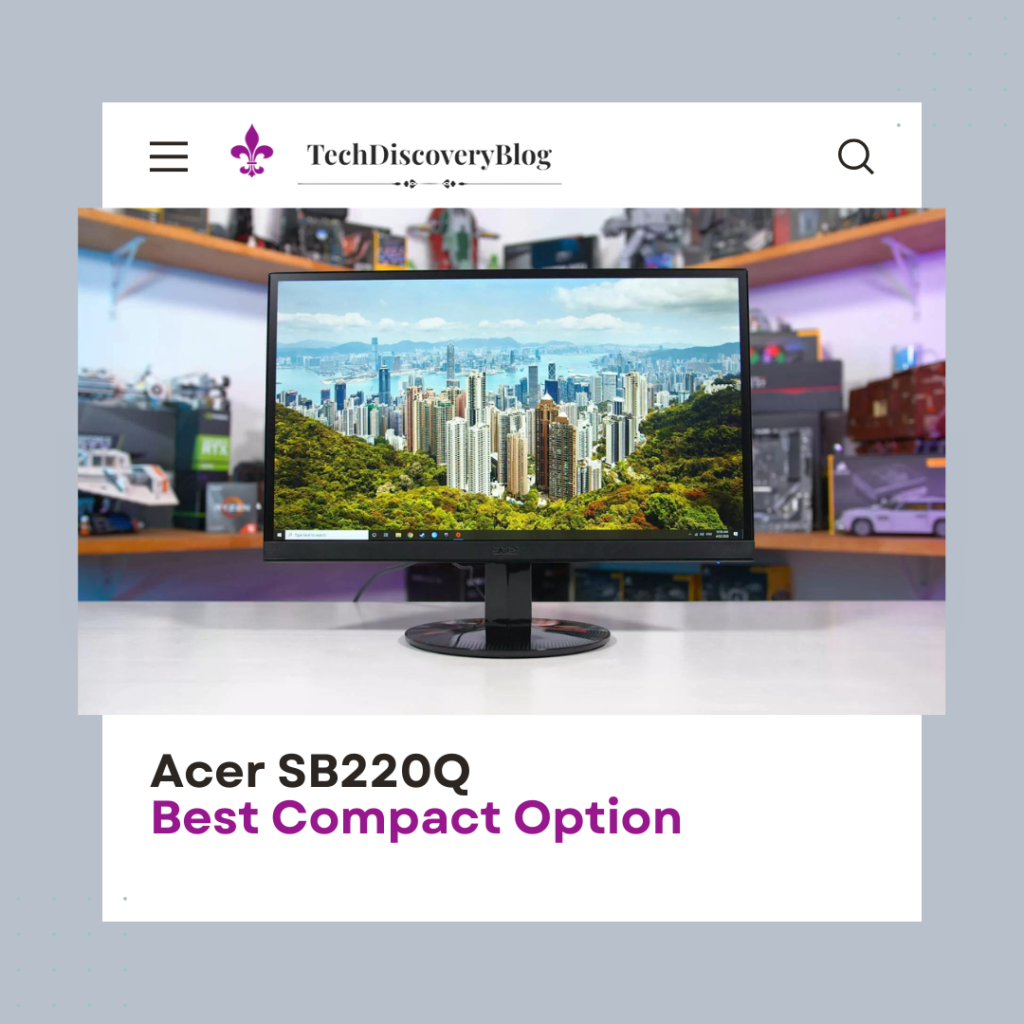
Acer SB220Q
The Acer SB220Q is a 21.5-inch Full HD monitor that offers a budget-friendly option for entry-level video editors with a focus on simplicity.
Pros Cons
✅ Affordable price point ❌ Limited connectivity options
✅ Full HD resolution for everyday editing tasks ❌ Smaller screen size may not suit all editing needs
✅ Ultra-thin design with minimal bezels ❌ Color accuracy may not meet professional standards
✅ AMD FreeSync technology for smoother visuals
✅ Quick response time suitable for casual gaming
Best Monitor for Video Editing
Comparison of Key Features
When it comes to selecting the best monitor for video editing, understanding the key features is crucial. Let’s break down the essential aspects to consider and how they impact your video editing experience.
Resolution Matters
Video editing demands precision, and a higher resolution ensures a clearer and more detailed view of your work. Look for monitors with resolutions like 4K (3840 x 2160) for crisp visuals. This clarity allows you to spot intricate details, enhancing your editing accuracy.
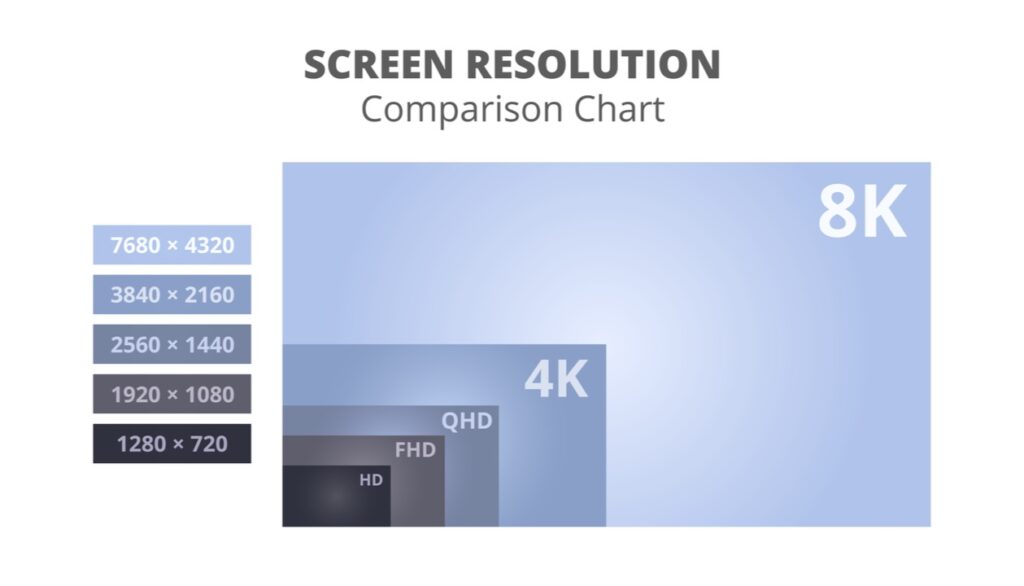
Color Accuracy for Vibrant Editing
Accurate color representation is a game-changer in video editing. Monitors with a wide color gamut and high color accuracy ensure that the colors you see on the screen match the final output. Look for monitors with features like HDR (High Dynamic Range) for a more vivid and lifelike editing experience.

Choosing the Right Panel Type
Different panel types impact how colors are displayed and viewing angles.
- IPS (In-Plane Switching): Offers excellent color accuracy and wide viewing angles.
- TN (Twisted Nematic): Known for faster response times, but may compromise on color accuracy and viewing angles.
- OLED (Organic Light-Emitting Diode): Provides deep blacks and vibrant colors but might be pricier.
Consider your priorities and choose a panel type that aligns with your editing needs.
Size and Aspect Ratio
The size and aspect ratio of your monitor influence your editing workspace.
- Size: Larger screens provide more space for tools and timelines. However, balance is key; an excessively large monitor may strain your neck.
- Aspect Ratio: Standard 16:9 is common, but ultrawide 21:9 monitors offer an extended horizontal view, beneficial for timeline navigation.
Choose a size and aspect ratio that suits your editing style and workspace.
Connectivity Options for Seamless Integration
Ensuring your monitor has the right ports is essential for hassle-free connectivity. Look for monitors with a mix of HDMI, DisplayPort, and USB-C ports. This allows you to connect various devices like cameras and external drives directly to your monitor, streamlining your workflow.
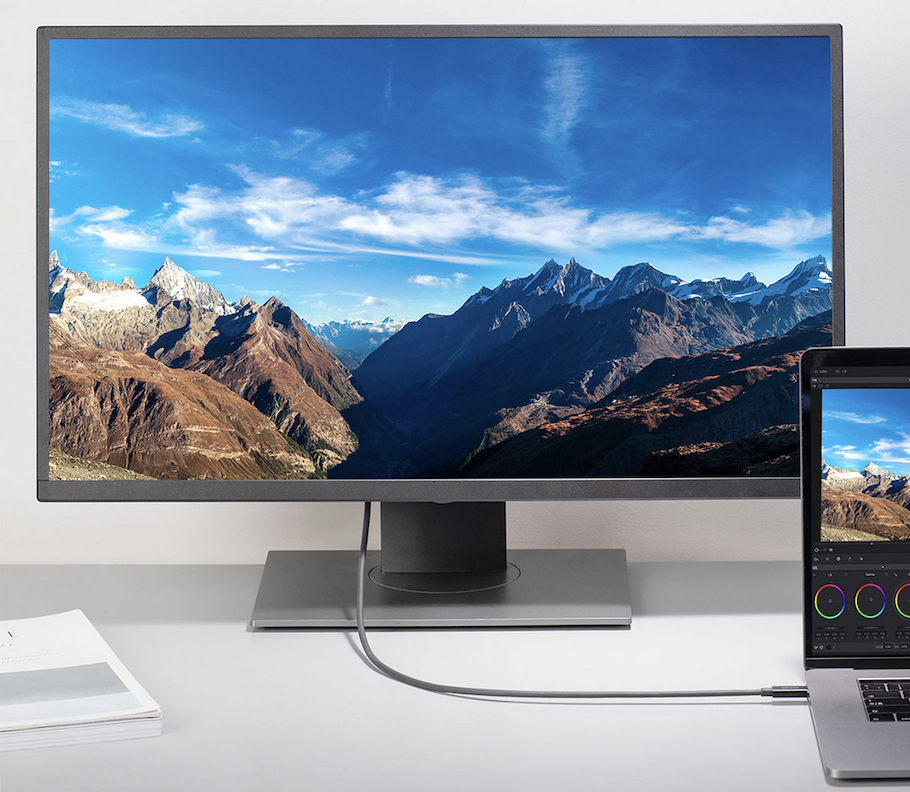
Refresh Rate and Response Time
For video editing, a high refresh rate might not be as critical as it is for gaming, but it still matters. A higher refresh rate ensures smoother motion, while a low response time reduces motion blur. Look for a balance that suits both video editing and general use.
In your quest for the best monitor for video editing, keeping these key features in mind will guide you towards making an informed decision. Assess your priorities, consider your budget, and find the best monitor for video editing monitor
Best Monitor for Video Editing
Size and Aspect Ratio
Selecting the correct size and aspect ratio for the best monitor for video editing significantly impacts your overall editing experience. Let’s break down the key considerations to ensure your monitor suits your workflow seamlessly.
Finding the Right Size
When it comes to the size of your video editing monitor, balance is key. While larger screens provide ample space for editing tools and timelines, excessively large monitors can strain your neck and make it challenging to focus on the entire screen.
Consider the physical space of your editing setup and the distance between you and the monitor. Ideally, your monitor should be large enough to accommodate your editing needs without causing discomfort.
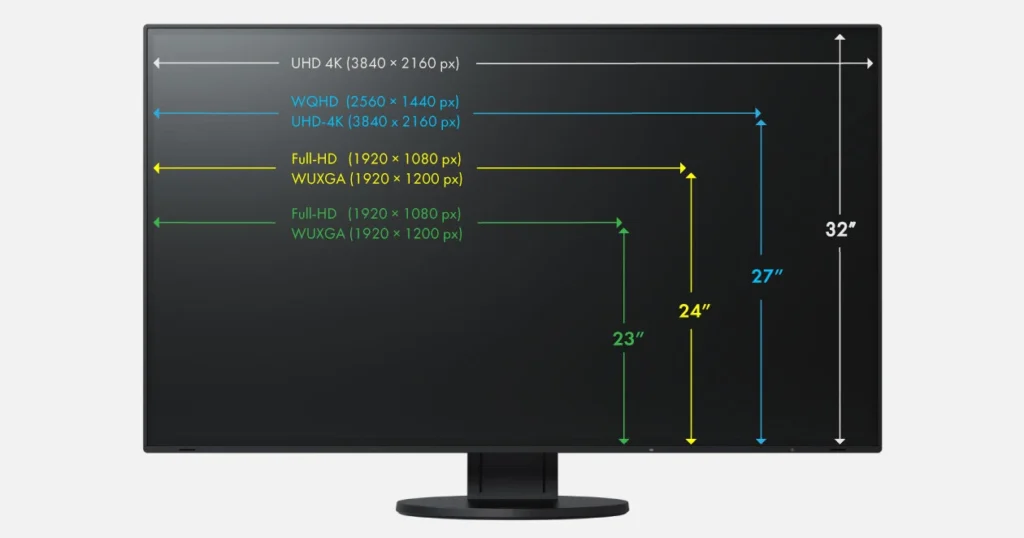
Aspect Ratio Essentials
Understanding aspect ratios is crucial for optimizing your editing workspace. The standard 16:9 aspect ratio is prevalent, offering a balanced view suitable for various editing tasks. However, if you’re looking for an extended horizontal view, consider ultrawide monitors with a 21:9 aspect ratio.
The 21:9 aspect ratio is particularly beneficial for timeline navigation, providing a broader canvas for arranging and editing your video clips. Assess your editing style and preferences to determine which aspect ratio best suits your needs.
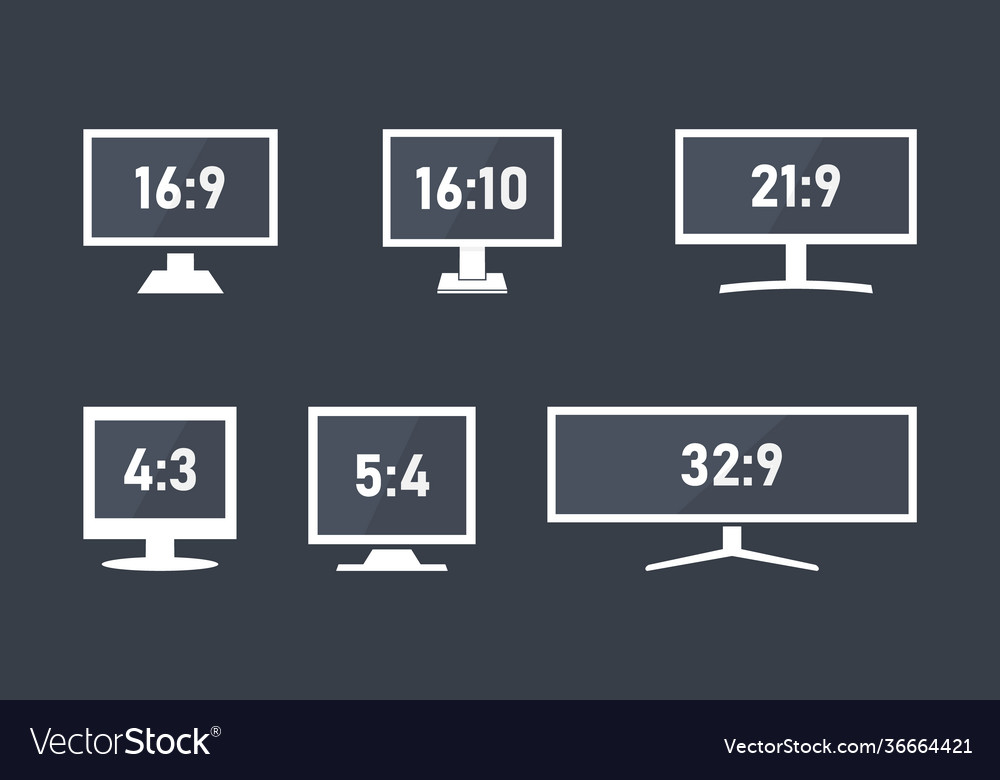
Practical Considerations
When selecting the size and aspect ratio, practical considerations play a vital role. Take into account the physical space on your desk, ensuring the monitor fits comfortably without overwhelming your workspace. Additionally, consider the resolution in tandem with the size to maintain clarity and detail in your editing tasks.
In conclusion, finding the right size and aspect ratio for your best monitor for video editing involves striking a balance between workspace requirements and personal comfort. By considering these factors, you’ll be well-equipped to choose a monitor that enhances your video editing capabilities and contributes to a seamless editing workflow.
Best Monitor for Video Editing
Connectivity Options
Choosing a video editing monitor with versatile connectivity options is paramount for a smooth and efficient editing workflow. Let’s delve into the essentials to consider when it comes to connecting your monitor to other devices.
Mix of Essential Ports
Look for monitors that offer a mix of essential ports, including HDMI, DisplayPort, and USB-C. These ports serve as the bridge between your monitor and external devices such as cameras, laptops, and external storage.
- HDMI: Ideal for connecting various multimedia devices, such as cameras and gaming consoles.
- DisplayPort: Offers high data transfer rates, making it suitable for connecting high-resolution displays and other peripherals.
- USB-C: A versatile port that not only transfers data but can also provide power to your laptop, reducing cable clutter.
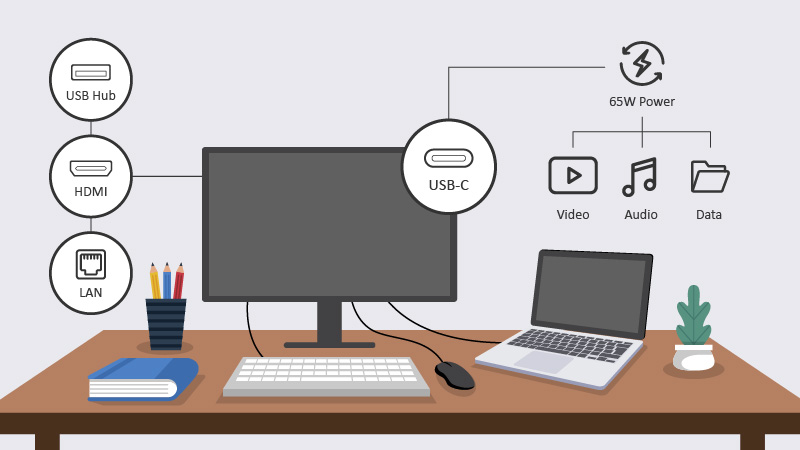
Streamlining Your Workflow
Having the right connectivity options directly impacts your workflow efficiency. Consider the devices you regularly use for video editing and ensure your monitor has the necessary ports to accommodate them. This ensures a hassle-free connection process, allowing you to focus on your editing tasks without interruption.
Compatibility with External Devices
Ensure that your chosen monitor’s connectivity options are compatible with your external devices. Check the specifications of your camera, laptop, or any other equipment you plan to connect. This compatibility ensures a seamless integration, allowing you to easily transfer files and preview your work on a high-quality display.
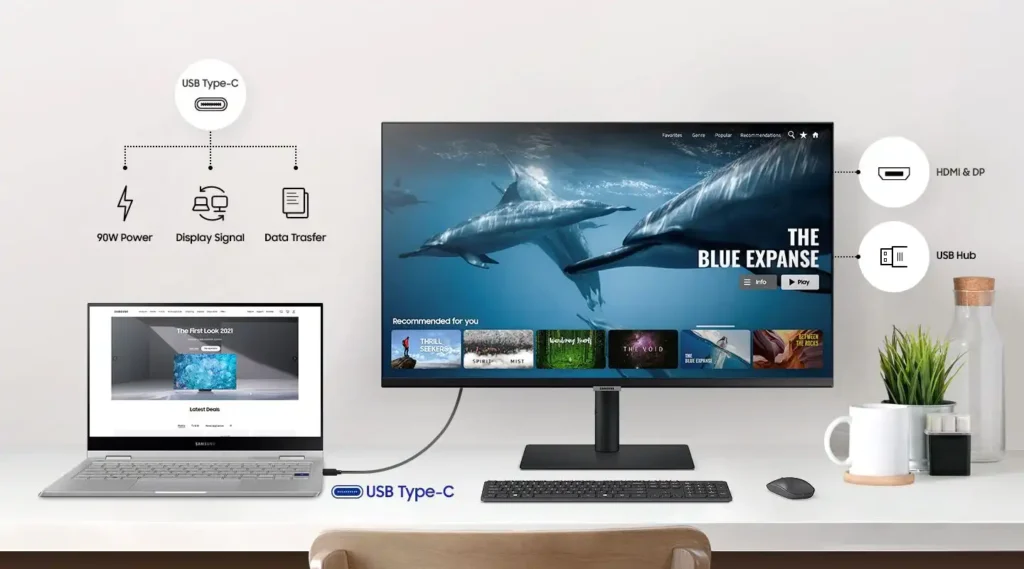
Cable Management for a Neat Setup
Efficient cable management is often overlooked but plays a crucial role in maintaining a tidy and organized workspace. Choose a monitor with well-placed ports and consider using cable organizers to prevent clutter. This not only enhances the aesthetics of your setup but also makes it easier to troubleshoot or make adjustments when needed.
In conclusion, the connectivity options of your video editing monitor are the bridge between your creative devices and the editing process. By choosing a monitor with a mix of essential ports, ensuring compatibility with your external devices, and implementing effective cable management, you set the stage for a seamless and efficient video editing experience.
Best Monitor for Video Editing
Refresh Rate and Response Time
Understanding the importance of refresh rate and response time is crucial when selecting a monitor for video editing. Let’s explore these two key aspects and how they contribute to a seamless editing experience.
Balancing Refresh Rate
The refresh rate of a monitor refers to how many times per second the screen refreshes its image. While high refresh rates are often emphasized for gaming, they can still impact the smoothness of motion in video editing. Aim for a balance that suits both video editing tasks and general use.
- Smooth Motion: A higher refresh rate, such as 60Hz or 75Hz, contributes to smoother motion when navigating through timelines and previewing video clips.
- Consider Practicality: While some monitors boast extremely high refresh rates, for video editing, a practical approach is often sufficient. A balance around 60Hz to 75Hz is generally suitable for most video editing tasks without unnecessary cost.

Reducing Motion Blur with Response Time
Response time is the time it takes for a pixel to change from one color to another. A lower response time helps reduce motion blur, which is beneficial when working with fast-paced video content.
- Faster Response Times: Monitors with faster response times, typically measured in milliseconds (ms), are effective in minimizing motion blur. Look for monitors with response times around 5ms or lower for optimal performance.
- Impact on Editing Precision: Faster response times contribute to a clearer display, allowing you to make precise edits without visual artifacts affecting your judgment.
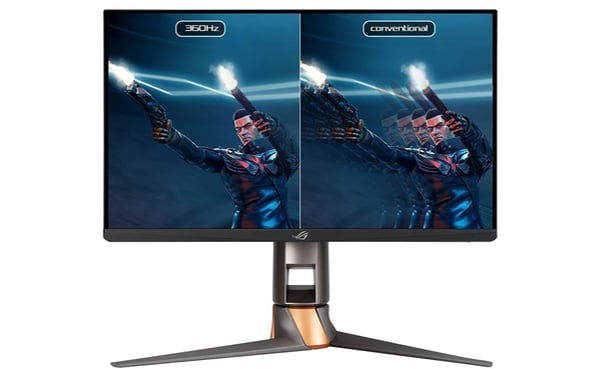
Considering Practical Editing Needs
When selecting a monitor for video editing, it’s essential to consider your practical editing needs. While ultra-high refresh rates and extremely low response times can be enticing, they might exceed the requirements of typical video editing tasks.
- Evaluate Your Workflow: Assess your specific video editing workflow. If you primarily work with high-resolution footage or intricate visual effects, you might benefit from a monitor with slightly higher specifications.
- Cost-Effective Solutions: Striking a balance between performance and cost-effectiveness is key. Invest in a monitor with refresh rates and response times that align with your editing demands without unnecessary extravagance.
In conclusion, understanding the relationship between refresh rate and response time is crucial for enhancing your video editing experience. By finding a balance that suits your practical editing needs, you ensure smooth motion, reduced motion blur, and optimal precision in your editing tasks.
Best Monitor for Video Editing
User Reviews and Testimonials:
When it comes to choosing the best monitor for video editing, hearing from real users provides valuable insights. Let’s explore the significance of user reviews and testimonials in helping you make an informed decision.
Real Experiences Speak Volumes
User reviews and testimonials offer a glimpse into the real-world experiences of individuals who have used a particular video editing monitor. These insights go beyond technical specifications, providing practical feedback on how the monitor performs in day-to-day editing tasks.
- Practical Usage: Discover how users integrate the monitor into their editing workflows and the challenges they overcome with its features.
- Issues and Solutions: Users often share any issues they’ve encountered and how they resolved them. This firsthand information can be invaluable in anticipating potential challenges.
Consider the Consensus
Look for common themes and patterns in user reviews. If multiple users highlight a specific feature as beneficial or express similar concerns, it provides a consensus that can guide your decision-making process.
- Consistency: A consistent positive or negative theme in reviews can be a strong indicator of what to expect from a particular monitor.
- Highlighting Key Features: Users often emphasize specific features that significantly impact their video editing experience. Pay attention to these highlights to align them with your priorities.
Verified Purchase Reviews
Verified purchase reviews add an extra layer of credibility. These reviews come from users who have actually bought and used the product, offering a more reliable perspective.
- Trustworthiness: Verified purchase reviews reduce the likelihood of fake or biased feedback, allowing you to trust the authenticity of the shared experiences.
- Verified Performance: Users share how the monitor performs in real-world scenarios, helping you make a more informed decision based on genuine usage.
Balancing Positive and Negative Feedback
Consider both positive and negative feedback to gain a well-rounded understanding of the best monitor for video editing. While positive reviews highlight strengths, negative reviews shed light on potential drawbacks.
- Identifying Deal-breakers: Negative feedback can help you identify any issues that might be deal-breakers for your specific needs, allowing you to make a more informed decision.
- Balanced Perspective: A balance of positive and negative feedback ensures a realistic perspective, helping you weigh the pros and cons effectively.
In conclusion, user reviews and testimonials serve as a valuable resource in your quest for the best monitor for video editing. By delving into real experiences, understanding common themes, and considering verified purchase reviews, you equip yourself with the knowledge needed to choose a monitor that aligns seamlessly with your video editing requirements.
Best Monitor for Video Editing
Conclusion
Selecting the best monitor for video editing involves considering a range of factors to ensure it aligns perfectly with your editing needs. Let’s recap the key points to guide you towards making an informed decision.
Focus on Essential Features
When searching for the best monitor for video editing, prioritize essential features such as resolution, color accuracy, and panel type. These elements directly impact the clarity and precision of your editing tasks.
Size and Aspect Ratio Considerations
Balance is crucial when determining the size and aspect ratio of your monitor. Choose a size that suits your workspace without overwhelming it, and consider the aspect ratio that complements your editing style.
Versatile Connectivity Options Matter
Opt for a monitor with a diverse range of connectivity options, including HDMI, DisplayPort, and USB-C. This ensures seamless integration with your editing devices, streamlining your workflow.
Understanding Refresh Rate and Response Time
Grasp the significance of refresh rate and response time in enhancing your video editing experience. Strike a balance that caters to your practical editing needs without unnecessary extravagance.
Real Experiences from User Reviews
User reviews and testimonials provide real-world insights into the performance of the best monitor for video editing. Consider both positive and negative feedback, and look for consensus among users to make a well-informed decision.
Making an Informed Decision
By combining these factors, you can confidently navigate the market and choose a the best monitor for video editing that not only meets your technical requirements but also seamlessly integrates into your editing workflow.
In conclusion, the process of finding the best monitor for video editing involves understanding your specific needs, considering essential features, and drawing insights from real user experiences. Armed with this knowledge, you’re well-equipped to make a decision that enhances your video editing capabilities and brings your creative vision to life.

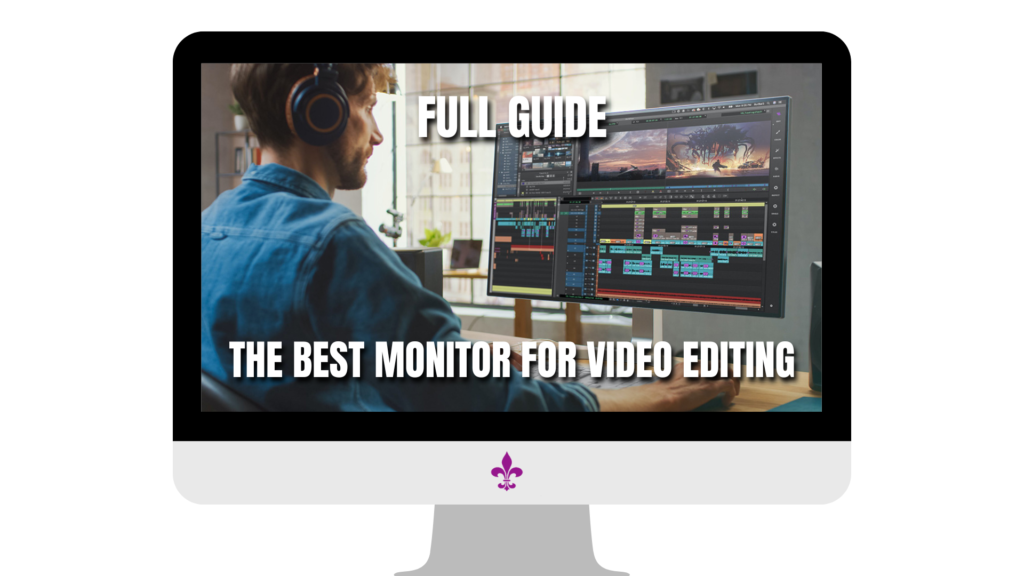
Pingback: The Best Monitor Arms of 2024 - Full Guide -